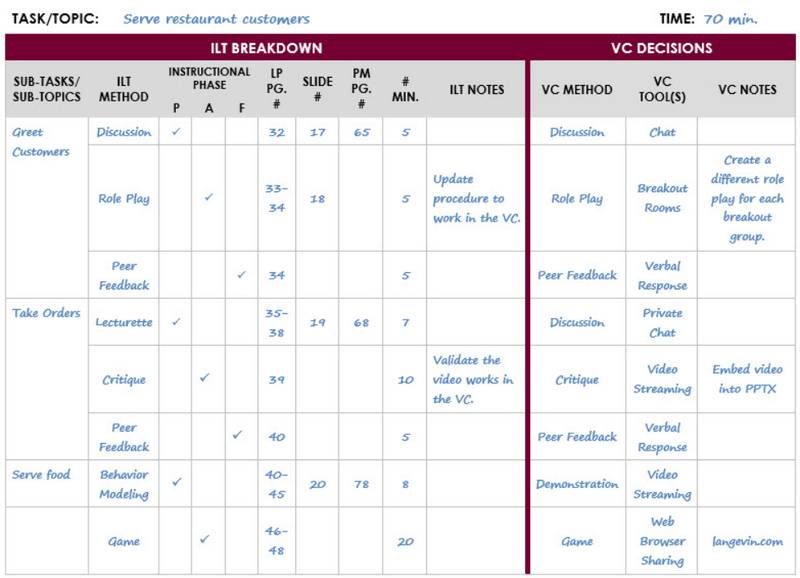ATD Blog
A Simple 6-Step Audit Process for Better Course Conversion
Tue Dec 24 2019

When converting an instructor-led training (ILT) program to the virtual classroom (VC), don’t fall into the trap of creating a webcast.
Prior to joining Langevin, I had ample experience converting ILT courses to the VCs. In hindsight, though, my process was far from ideal. I fell into the trap that many of us do—thinking I could simply use the instructor-led training content as-is and deliver it in the VC.
During the design phase of the process, I spent countless hours ensuring all the key learning points were covered in the allotted time. However, little to no time was spent thinking about how the training would translate to a participant sitting in front of a computer screen. This resulted in a VC course that was presentation-heavy and unengaging. In reality, it was more of a webcast than a VC course.
So, when tasked with converting a course here at Langevin, I knew there had to be a better way to do it. As I worked with my fellow instructional designers, we came up with a process that ensured the VC course covered the original content, was visually appealing, interactive, and engaging to the participant and, most importantly, included application and practice opportunities that suited the virtual environment. At the heart of that process is the course audit_._ The course audit ensures the result of your conversion efforts is a true virtual classroom course rather than a lackluster webcast.
To effectively convert an instructor-led course, it needs to be broken down to its individual parts. To do this, we use a comprehensive tool called the Course Audit Worksheet, which helps guide the audit process and allows us to document our findings in one location. It’s based on the following six-step process:
Step 1: Identify the task and subtasks of the ILT course.
Step 2: Identify the ILT methods used to present the content and to have learners practice the various subtasks in the classroom.
Step 3: Document any supplemental materials.
Step 4: Identify the time needed to deliver the subtasks in the classroom.
Once steps one through four are complete, it’s time to make design decisions to deliver the content via the virtual classroom.
Step 5: Choose the VC methods to present and have learners practice each subtask.
Step 6: Choose a VC tool to deliver each method in your virtual platform.
The end product is your roadmap to developing an interactive, performance-based virtual classroom course.

For further details about the course audit process and how it fits into the entire conversion process, check out our session at ATD TechKnowledge 2020, From Traditional to Virtual Classroom: Conversion Made Easy.
